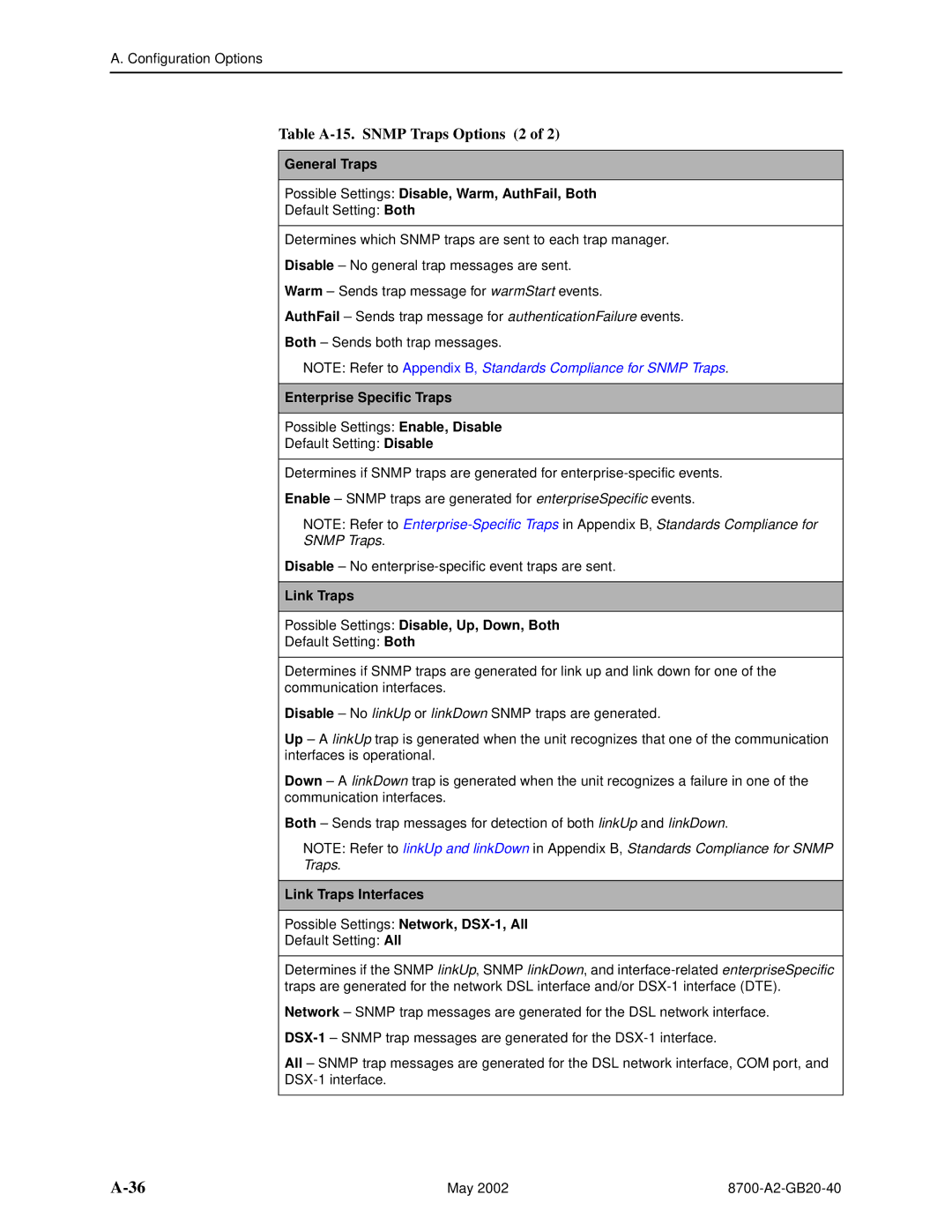
A. Configuration Options
Table A-15. SNMP Traps Options (2 of 2)
General Traps
Possible Settings: Disable, Warm, AuthFail, Both
Default Setting: Both
Determines which SNMP traps are sent to each trap manager.
Disable – No general trap messages are sent.
Warm – Sends trap message for warmStart events.
AuthFail – Sends trap message for authenticationFailure events.
Both – Sends both trap messages.
NOTE: Refer to Appendix B, Standards Compliance for SNMP Traps.
Enterprise Specific Traps
Possible Settings: Enable, Disable
Default Setting: Disable
Determines if SNMP traps are generated for
Enable – SNMP traps are generated for enterpriseSpecific events.
NOTE: Refer to
SNMP Traps.
Disable – No
Link Traps
Possible Settings: Disable, Up, Down, Both
Default Setting: Both
Determines if SNMP traps are generated for link up and link down for one of the communication interfaces.
Disable – No linkUp or linkDown SNMP traps are generated.
Up – A linkUp trap is generated when the unit recognizes that one of the communication interfaces is operational.
Down – A linkDown trap is generated when the unit recognizes a failure in one of the communication interfaces.
Both – Sends trap messages for detection of both linkUp and linkDown.
NOTE: Refer to linkUp and linkDown in Appendix B, Standards Compliance for SNMP
Traps.
Link Traps Interfaces
Possible Settings: Network, DSX-1, All
Default Setting: All
Determines if the SNMP linkUp, SNMP linkDown, and
Network – SNMP trap messages are generated for the DSL network interface.
All – SNMP trap messages are generated for the DSL network interface, COM port, and
May 2002 |
